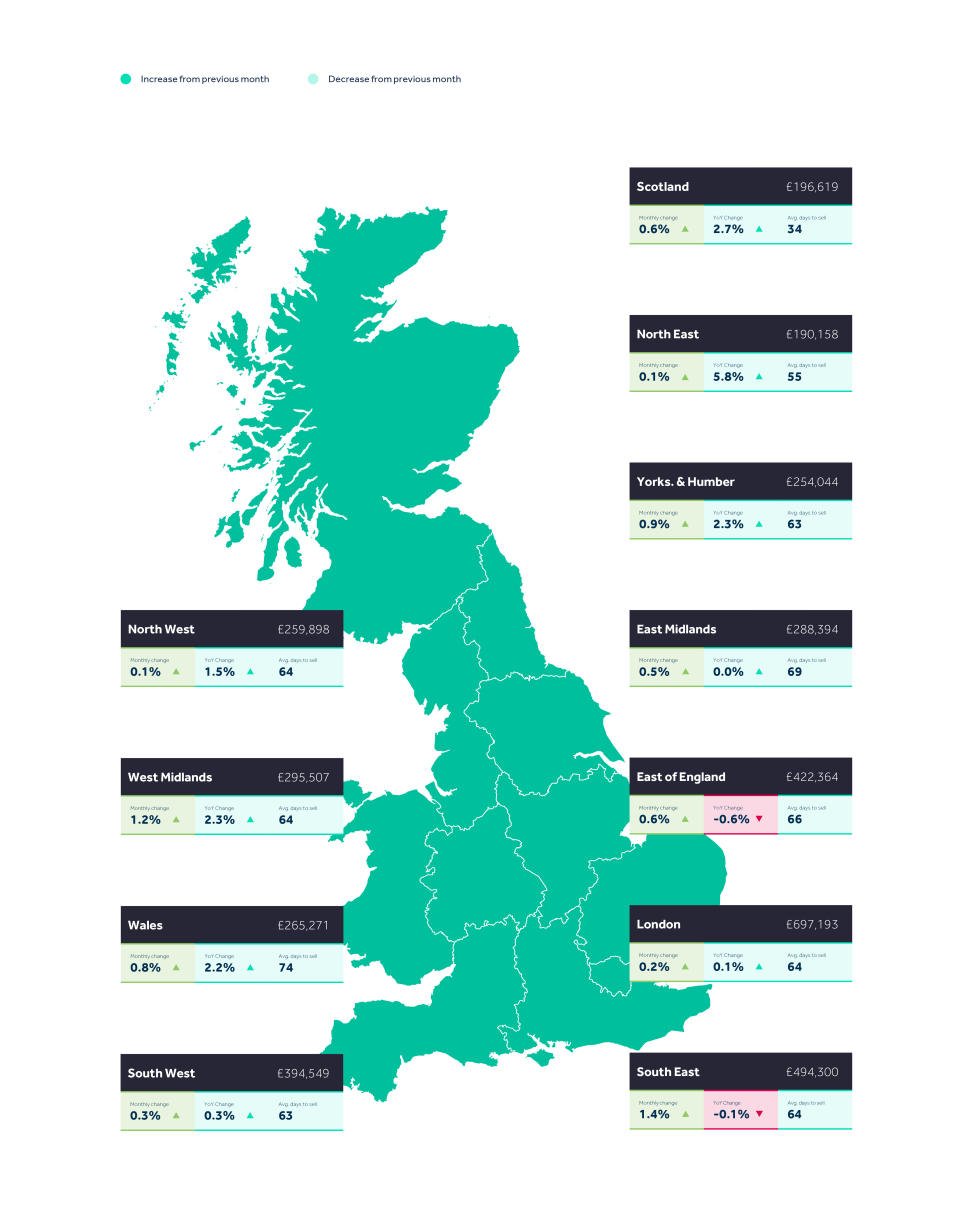Average house price tag hit new high of £375,131 in May
The average price tag on a home reached a record high of £375,131 in May, according to Rightmove.
Across Britain, the price of a property coming to market rose 0.8%, or £2,807, month-on-month.
Pent-up demand from would-be buyers who paused their plans last year is a key driver behind increased home mover activity despite mortgage rates remaining elevated for longer than anticipated, Rightmove said.
The number of sales being agreed during the first four months of the year is 17% higher than last year.
May is typically a strong month for price growth, with new price records having been set in May in 12 of the previous 22 years, the report said.
Since the last price record set a year ago in May 2023, average prices are only 0.6% higher overall, a reminder that the market remains very price-sensitive, it added.
In some positive signs for the mortgage market, HSBC UK, Barclays and TSB cut their mortgage rates last Friday.

Tim Bannister, Rightmove’s director of property science, said: “The momentum of the spring selling season has exerted enough upwards price pressure to reach a new record asking price.”
Rightmove anticipates the number of completed house sales this year to reach around 1.1 million, but it said the lengthy time to complete a sale after finding a buyer remains a challenge for both agents and movers.
The average time between agreeing a sale and legal completion is five months. In total, it is taking more than seven months on average from a seller coming to market to completing their move, meaning would-be sellers hoping to celebrate Christmas in a new home need to be coming to the market about now, the website said.
The findings were released as property firm Hamptons said tenants renewing an existing contract in Britain typically saw their rent rise by an average of 8.3% over the 12 months to April, outpacing rental growth on a newly-let property (6.4%).
Aneisha Beveridge, head of research at Hamptons, said: “Over the last two years, strong rental growth on the open market has meant that the gap between market rates and what some tenants were paying rose significantly.
“The large gap between market rates and what many tenants are paying is a big disincentive for them to move unless they have to. Moving increasingly means getting less home for more money.
“While time will eventually close the gap between what sitting and new tenants are paying, it may take longer if rental growth on the open market starts picking up again.”
